AggieSat-4 and Bevo-2 release

The AggieSat-4 (AGS4) spacecraft, a bigger 50 kilogram satellite, for the
second mission of the LONESTAR campaign. LONESTAR Mission 2 consists of
AGS4 and Bevo-2 from UT Austin.
LONESTAR: Low-Earth Orbiting Navigation Experiment
for Spacecraft Testing Autonomous Rendezvous and Docking
With Bevo-2 being a 3-U cubesat integrated into AggieSat-4, the combined
spacecraft are to be delivered to JSC for launch as soft stowage on the
SpaceX Dragon CRS-7 or 8 and release from the International Space Station
(ISS) in 2015 via JSC's new Cyclops release mechanism.
The objectives for this mission include relative-navigation solutions,
three-axis stabilization, intersatellite communications, DRAGON GPS system
characterization, and visual capability. In addition, after release from
ISS, system checkout, and stabilization, AggieSat4 will release Bevo-2 to
begin pointing, tracking, and relative navigation operations. It is to de_
monstrate three-axis attitude determination and control (within 2 degrees),
collect DRAGON carrier phase GPS data, capture video of Bevo-2 release
(Aerospace Corporation 2MP), compute and crosslink relative navigation
solutions, track Bevo-2.
It was launched onboard of the Cygnus CRS-4 cargo craft towards the Inter_
national Space Station (ISS), from where it will be deployed via the Space
Station Integrated Kinetic Launcher for Orbital Payload Systems (SSIKLOPS).
Bevo 2 is a picosat mission of the University of Texas, a part of NASA
Johnson Space Center's LONESTAR-2 (Low-Earth Orbiting Navigation Experiment
for Spacecraft Testing Autonomous Rendezvous and Docking) project.
LONESTAR is a collaborative project between the University of Texas at
Austin, NASA's Johnson Space Center, and Texas A&M University. The project
is a series of missions with each university contributing one satellite
per mission, leading to an autonomous rendezvous and docking (AR&D)
demonstration in the final mission. LONESTAR-2 is the second mission in
the series.
The goal of this mission is to launch two satellites together that will
separate in orbit and perform proximity operations, including taking
pictures of each other. UT-Austin's satellite is known as Bevo-2. Bevo-2
is a 3-unit CubeSat that will be deployed from the Texas A&M AggieSat-4
satellite, an ~50 kg nanosatellite.
LONESTAR-2 is scheduled for flight in early 2016. Bevo-2 features a number
of innovative CubeSat technologies, including an integrated 3-axis attitude
determination and control system, a cold-gas propulsive thruster, and a
multi-purpose camera that will be used both for star tracking and imaging.
[Source] (C)Gunter's Space Page
[Reference]
http://www.ne.jp/asahi/hamradio/je9pel/falconsa.htm
http://www.nasa.gov/mission_pages/station/research/experiments/859.html
http://blogs.nasa.gov/spacestation/2016/01/27/student-satellites-prepped-for-deployment-from-japanese-lab/
AggieSat-4 release photos
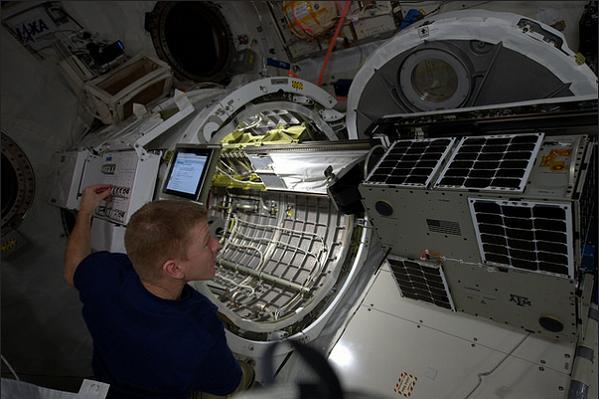
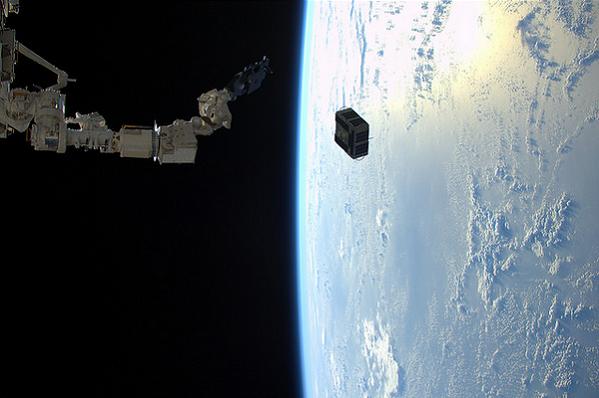
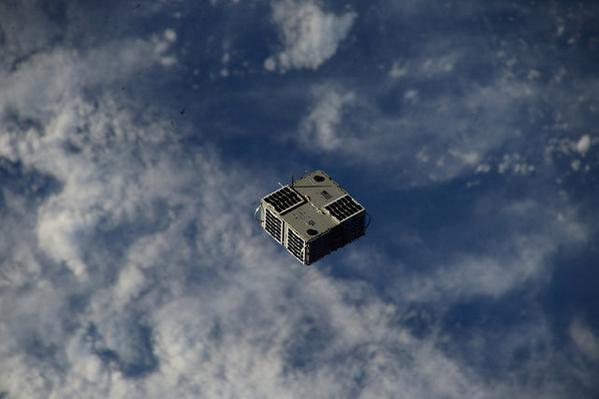 Tim Peake is a EuropeanSpaceAgency(ESA) astronaut of British nationality.
He is currently living and working on the International Space Station for
Expedition 46/47. Tim has a background as a test pilot and a British Army
Air Corps officer.
(C)Tim Peake
http://timpeake.esa.int/
http://www.facebook.com/ESATimPeake/
http://www.flickr.com/photos/timpeake/
AggieSat-4 launch video
Tim Peake is a EuropeanSpaceAgency(ESA) astronaut of British nationality.
He is currently living and working on the International Space Station for
Expedition 46/47. Tim has a background as a test pilot and a British Army
Air Corps officer.
(C)Tim Peake
http://timpeake.esa.int/
http://www.facebook.com/ESATimPeake/
http://www.flickr.com/photos/timpeake/
AggieSat-4 launch video
 (C)NASA, Texas A&M University
http://pbs.twimg.com/tweet_video/CWYCcLeUwAEtFJB.mp4
http://pbs.twimg.com/tweet_video/CZ5rx_bW0AAdrQ0.mp4
http://www.nasa.gov/mission_pages/station/research/unlikely-pair-of-satellites.html
http://www.nasa.gov/sites/default/files/styles/side_image/public/thumbnails/image/lonestar.gif
http://spaceflight101.com/pair-of-satellites-ejected-from-iss-for-in-space-navigation-exercise/
AggieSat-4 telemetry
10:19-10:28 UTC, 2 Feb 2016, Ele 18 W-N-NE, 436.250MHz 9600bps FSK
(C)NASA, Texas A&M University
http://pbs.twimg.com/tweet_video/CWYCcLeUwAEtFJB.mp4
http://pbs.twimg.com/tweet_video/CZ5rx_bW0AAdrQ0.mp4
http://www.nasa.gov/mission_pages/station/research/unlikely-pair-of-satellites.html
http://www.nasa.gov/sites/default/files/styles/side_image/public/thumbnails/image/lonestar.gif
http://spaceflight101.com/pair-of-satellites-ejected-from-iss-for-in-space-navigation-exercise/
AggieSat-4 telemetry
10:19-10:28 UTC, 2 Feb 2016, Ele 18 W-N-NE, 436.250MHz 9600bps FSK
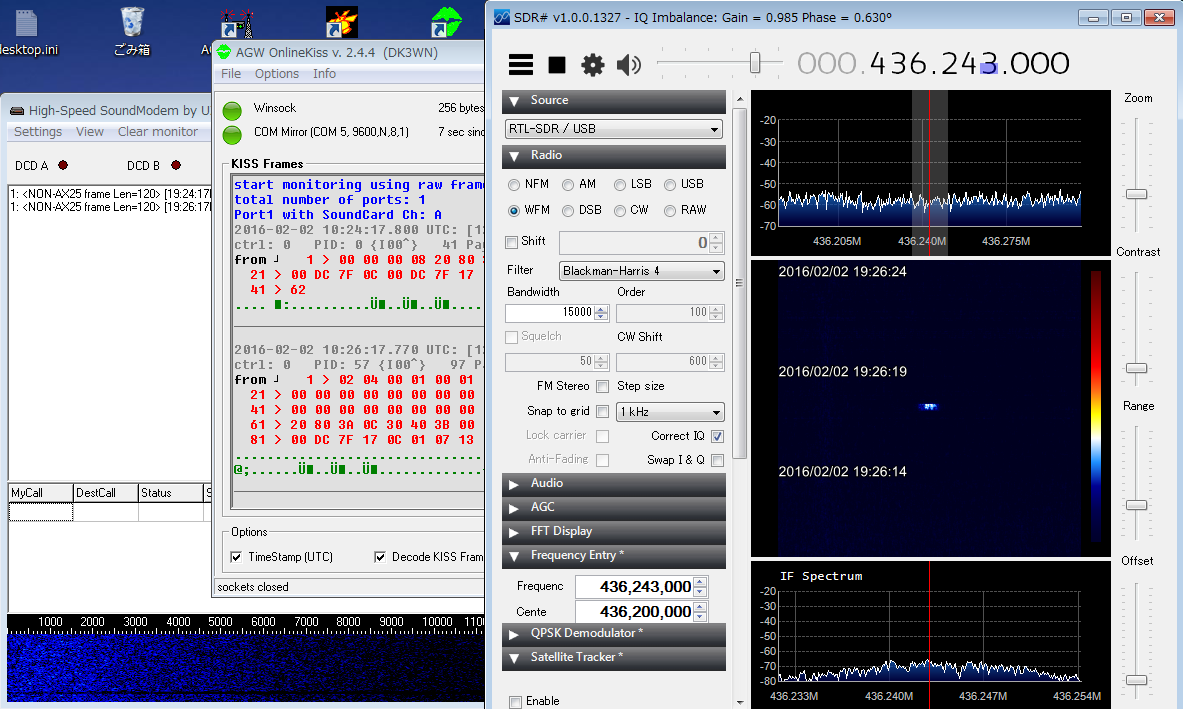
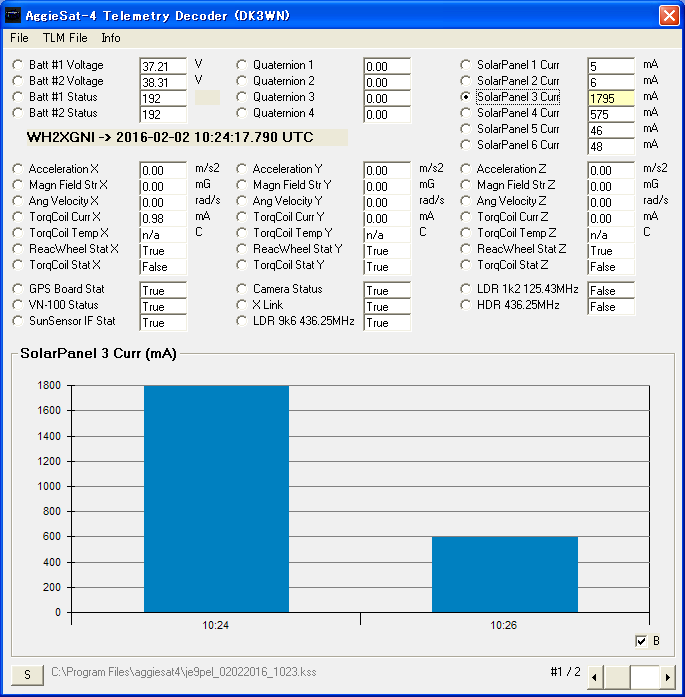
 Back to Top
Back to Top
 Back to Home Page
Back to Home Page




 Tim Peake is a EuropeanSpaceAgency(ESA) astronaut of British nationality.
He is currently living and working on the International Space Station for
Expedition 46/47. Tim has a background as a test pilot and a British Army
Air Corps officer.
(C)Tim Peake
http://timpeake.esa.int/
http://www.facebook.com/ESATimPeake/
http://www.flickr.com/photos/timpeake/
AggieSat-4 launch video
Tim Peake is a EuropeanSpaceAgency(ESA) astronaut of British nationality.
He is currently living and working on the International Space Station for
Expedition 46/47. Tim has a background as a test pilot and a British Army
Air Corps officer.
(C)Tim Peake
http://timpeake.esa.int/
http://www.facebook.com/ESATimPeake/
http://www.flickr.com/photos/timpeake/
AggieSat-4 launch video
 (C)NASA, Texas A&M University
http://pbs.twimg.com/tweet_video/CWYCcLeUwAEtFJB.mp4
http://pbs.twimg.com/tweet_video/CZ5rx_bW0AAdrQ0.mp4
http://www.nasa.gov/mission_pages/station/research/unlikely-pair-of-satellites.html
http://www.nasa.gov/sites/default/files/styles/side_image/public/thumbnails/image/lonestar.gif
http://spaceflight101.com/pair-of-satellites-ejected-from-iss-for-in-space-navigation-exercise/
AggieSat-4 telemetry
10:19-10:28 UTC, 2 Feb 2016, Ele 18 W-N-NE, 436.250MHz 9600bps FSK
(C)NASA, Texas A&M University
http://pbs.twimg.com/tweet_video/CWYCcLeUwAEtFJB.mp4
http://pbs.twimg.com/tweet_video/CZ5rx_bW0AAdrQ0.mp4
http://www.nasa.gov/mission_pages/station/research/unlikely-pair-of-satellites.html
http://www.nasa.gov/sites/default/files/styles/side_image/public/thumbnails/image/lonestar.gif
http://spaceflight101.com/pair-of-satellites-ejected-from-iss-for-in-space-navigation-exercise/
AggieSat-4 telemetry
10:19-10:28 UTC, 2 Feb 2016, Ele 18 W-N-NE, 436.250MHz 9600bps FSK

